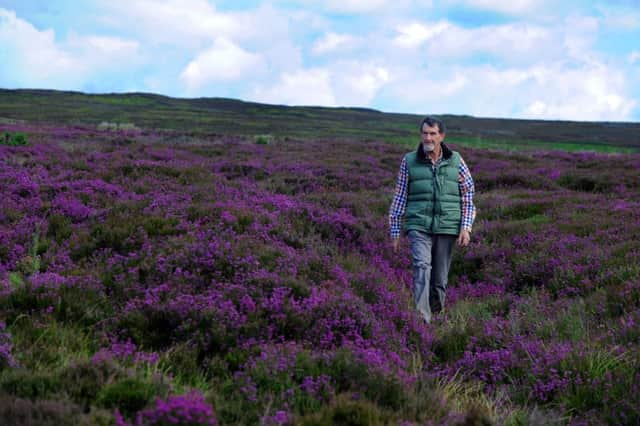Moors menace in need of close management


The North York Moors is the largest single area of continuous heather upland heath in the world, but where heather is the good guy the green fern known as bracken that grows alongside it is most definitely the bad guy.
Bracken is one of the bullies of the plant world due to its invasive nature. It’s toxic to sheep, dogs, cattle and pigs when ingested and has been linked to cancers in humans. It makes you wonder why it exists at all and why there haven’t been ways of exterminating it completely. It’s not that simple.
Advertisement
Hide AdAdvertisement
Hide AdProfessor Roy Brown is perhaps the world’s leading authority on the uplands and bracken control. He’s spent a large part of his 69 years analysing, advising and finding the best ways of keeping its growth at bay. He’s worked in the North York Moors for over 40 years, runs bracken control systems across 6,000 hectares on Bransdale Moor and is now running trials in England and Scotland looking at possible alternative chemical usage.
“The main chemical we’re using at present is Asulox but it is not registered in Europe and is only being used on EU emergency authorisation although it is hoped this will be approved fully by 2017.
“Asulox absorbs into the plant and deprives the development of the substances that help the plant manufacture folic acid. Absorption means that buds are stopped from being able to grow as all living creatures and plants need folic acid to do so. It uses the ingredient Asulam and is widely regarded as the safest herbicide.”
Roy wants techniques that will ensure better moorland management.
Advertisement
Hide AdAdvertisement
Hide Ad“Bracken is the bad guy but it has a role to play in the ecosytem that exists in the moors. It breaks up the soil and provides habitat for flies and shelter for sheep and other mammals that enjoy lying up against it. In terms of creatures, plants and life on land it is the most successful and most widely distributed higher plant in the world and grows in every continent except Antarctica. It grows to between 3-5 metres two-thirds of the way up Mount Kilimanjaro.
“It takes over the more interesting and important habitats because it is so powerful and it is increasing in its area in the North York Moors. This is particularly of concern in Bransdale where I look after the Bransdale Moor Higher Level Stewardship Scheme. We have a major bracken problem here that the farmers and gamekeepers have realised needs addressing. Bracken is carcinogenic to animals and humans if it’s taken in and this is why sheep on the North York Moors can be susceptible to diseases. Ticks enjoy bracken for its habitat and sheep also like it for shelter and warmth.”
While you may see controlled burning of moorland vegetation at certain times in the year this is heather not bracken. Roy explains why: “The worst thing you can do is burn bracken because you create a lovely nutrient bed and it revels in acid conditions. If you burn a bed of bracken then away go the bracken spores once again and it becomes even denser in two years’ time.
“It is vital to control bracken. These natural and semi-natural environments of heather moorland have been influenced by man through burning to improve the management of red grouse and sheep grazing and if the burning of heather has been conducted near to bracken it is the bracken that can benefit. One of the benefits of heather, other than its beauty, is you have biological diversity but once the bracken starts to invade that’s when the heather is defeated and with it you suffer a loss of the beautiful landscape and habitat quality.
Advertisement
Hide AdAdvertisement
Hide Ad“This is a serious problem and finding solutions in both controlling bracken growth and the on-going management of animals whereby the sheep farmers treat their moorland flocks regularly to keep clear of ticks and scab is essential. I’m on a number of government research contracts, including specifically finding new chemicals that can control bracken. I’ve worked with chemical companies for many years and have set up programmes designed to tackle the problem from John O’ Groats to Land’s End. It’s not something that’s going away.”
Roy Brown is Professor in Epidemiology & Animal Health at Lincoln University and was lecturer at Seale Hayne University in Plymouth. He lives in North Yorkshire.